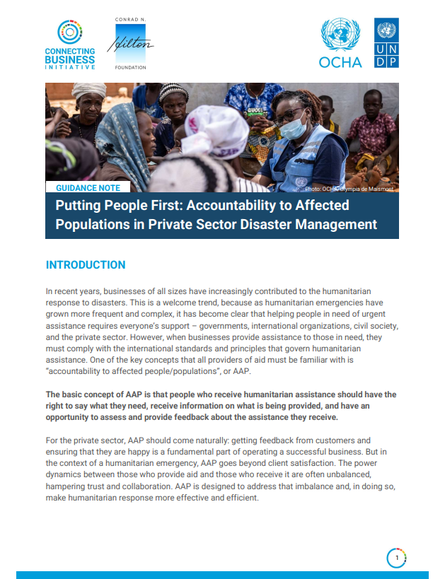
In recent years, businesses of all sizes have increasingly contributed to the humanitarian response to disasters. This is a welcome trend, because as humanitarian emergencies have grown more frequent and complex, it has become clear that helping people in need of urgent assistance requires everyone’s support – governments, international organizations, civil society, and the private sector. However, when businesses provide assistance to those in need, they must comply with the international standards and principles that govern humanitarian assistance. One of the key concepts that all providers of aid must be familiar with is “accountability to affected people/populations”, or AAP.
The basic concept of AAP is that people who receive humanitarian assistance should have the right to say what they need, receive information on what is being provided, and have an opportunity to assess and provide feedback about the assistance they receive.
For the private sector, AAP should come naturally: getting feedback from customers and ensuring that they are happy is a fundamental part of operating a successful business. But in the context of a humanitarian emergency, AAP goes beyond client satisfaction. The power dynamics between those who provide aid and those who receive it are often unbalanced, hampering trust and collaboration. AAP is designed to address that imbalance and, in doing so, make humanitarian response more effective and efficient.
This Guidance Note is intended to give clear and accessible information to businesses and business networks about how they can best ensure that the assistance they provide is relevant, inclusive and accessible to those who are most in need.
